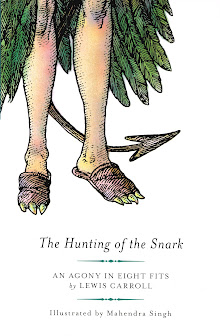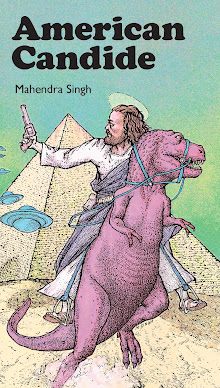The Airtight Garage started off as a bit of a larkish bagatelle but as the book progressed, Moebius employed more and more stylistic & technical variations: fast vs. slow, chicken-fat vs. clear-line, etc. But it’s in the very first section, the Major Fatal prologue, that he really played his hand, as we gambling inkers say.

I have to confess that page 10 is one of my favorite pages in the entire AG. It’s a classic example of direct inking, where the penciling is minimal and the inking is mostly improvised on the fly. Such a strategy compels the inker’s hand to show its stuff without resorting to any stylistic subterfuge and is not for the weak-hearted and handed.
The rule of this page (and yes, the first three rules of black & white camera-ready art that pleases the eye are still in force) is zen-like in its simplicity:
4. Ink to reveal the hand, not just the objects being rendered
It’s all about the hand, its presence on this page is overwhelming, much more so than in most commercial work Moebius (and other illustrators) did. Until several years ago, most book & high-end magazine work preferred a crisp, slick surface. The hand was usually hidden behind a Potemkin village of polished, impenetrable marks and on the whole, readers seemed to prefer it that way.
The Major Fatal prologue was a bit of a reaction to this. On page 10, the hand shows itself everywhere — but never clumsily. And it’s not just the obvious scribbling on the man’s face in panel 1 or the nervous foliage in panel 3. The entire pattern created by the hand’s movement leaps forward to create a nervous tension on all levels.
Panel 2 is exquisitely well-inked and deserves careful study. The background has vanished and we’re left with a brilliant, fast passage of contour drawing on horse & rider. It is so fast that we can see the delicate marks of the half-lifted nib whenever it changes heading. The nib is omnidirectional, it’s rounded enough to move spontaneously in all directions, unlike more precise nibs which catch and “sneeze” ink when moving too fast.
This gives the hand free rein to manoeuver and also allows the physical liquidity of the ink to flavor the rendering. That is to say, the ink blobs and crawls a bit (and each brand of ink behaves differently) whenever the hand’s impetus overwhelms the nib’s inertia.
The movements are economical, the nib leaves the paper as little as often, note the liquid parsimony of the man’s splayed hand. The description of the horse’s head perfectly breaks up the positive & negative spaces and then the pen goes down the neck, first hatching from 1 o’clock to 7 o’clock, then squiggling nervously and executing a half-spiral before exiting that passage.

Here’s an overlay explaining this. It also shows the same rapid, automatic movement of the hand that has rendered the man’s face in panel 1. The whiskers are grizzled with nervous scribbling while the eyes & nose are perfectly described with furious hatching.
This sort of fast, unthinking and rhythmic angling of a nib around a spherical volume not only describes an object; it’s also provides an immense, somatic pleasure to the inker’s hand. It feels right. The pleasure of movement is the key. The experienced hand’s muscle memory renders such angling passages with gusto. And as I've mentioned before, this "stabby" spherical movement was the foundation of Moebius' crosshatching technique, a technique which we'll analyze in a later posting.
I mentioned the stylistic Potemkin village before. The inker’s hand is often hidden behind one and to be honest, it’s not such a bad thing after all. This writer, in his own inking, has deeply immured himself in a byzantine, utterly impenetrable Potemkin village of inking. Perhaps one day I’ll venture out and mingle with the local mujiks but for now, I prefer my hand to remain hidden. The somatic pleasure of intricate crosshatching has its own peculiar intensity, in particular when rendering the long serpentine arcs of deeply spherical volumes at obsessive length.
It’s important for modern inkers to remember that not only are they entertaining eyes but that they are doing so by making a unique hand-made object. Electronically shuffling numbers and facts in the digital Potemkin village of virtual reality pays better but the mental and physical pleasure of highly skilled manual labor has its own rewards. The mass reproduction of these objects is a subject unto itself but for now, the point is understanding how Moebius built his success upon his hand, upon the specific marks and general patterns that its movement made upon the page.
His performance was not only conceptually stimulating, it was also physically grounded in the reality of muscle and nerve and steel and paper and ink. The Airtight Garage was a mental and physical performance on all levels.
Finally, here’s two examples of pen work which show the hand. I apologize for the da Sesto’s quality, my main reference library is 600 miles away and I must rely on the internet for these drawings.

Albrecht Dürer, pen & ink

Cesare da Sesto, pen & ink
These are pen and ink performances from the early Renaissance, one in the Italian style and one in the German style. I usually choose mechanically reproduced examples (to match the three rules of The Airtight Garage) but this time I wanted to show the naked hand, so to speak.
We artists work in a world obsessed with creating perfectly commodified virtual realities which disdain the ethos of the skilled hand — for both commercial and conceptual reasons, I fear. But the airtight performances of Moebius — they dance elegant rings around the clumsy shambles of these latest re-inventions of our human reality.
The rhetoric of the hand, it's a resurgence of the Baroque aesthetic, in essence, and it re-affirms the power — and utility — of drawing happily. Ecce homo faber!
NB. One other thought has occurred to me regarding the stylistic display of the hand in inking: the use of Rapidographs & felt-tip markers. There are many inkers who do excellent work with the latter tools but this curmudgeon must confess that he harbors the sneaking suspicion that these artists' work would be even better with dip pens … the mono-width nib doesn't really show how one's hand has pushed and pulled and scrabbled about on the paper with the nib. The convenience is outweighed by the reduction in stylistic options. Crosshatching is deadened, the hand-heavy style is restrained and as for clear line with Rapidograph — the horror, the horror!




















